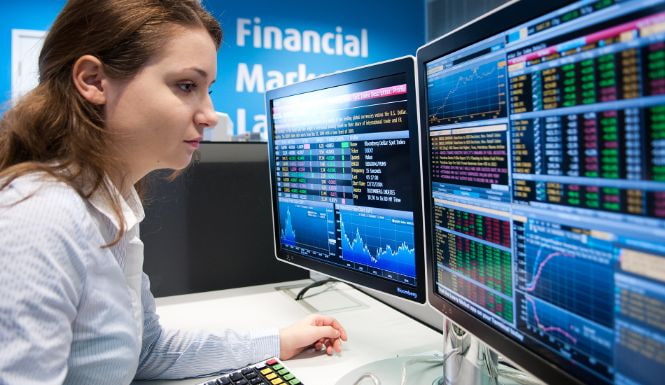Riding the Reals: Navigating the Volatility of Brazil's Currency – A Deep Dive into Recent Market Events
Meta Description: Brazil's Real, Central Bank intervention, currency volatility, Brazilian economy, forex trading, emerging market currencies, economic policy, inflation, interest rates, investment strategies.
Imagine this: you’re planning a dream vacation to Rio, the vibrant pulse of Brazil, and suddenly, the cost skyrockets. Why? The Brazilian Real (BRL), the currency you need, has taken a wild ride, a rollercoaster of ups and downs leaving many investors and travelers scratching their heads. This isn't just about vacation budgets; it's a reflection of complex economic forces shaping one of the world's most dynamic emerging markets. Recent events, particularly the Central Bank's intervention on December 20th, offer a fascinating case study in navigating the volatility inherent in emerging market currencies. This isn't just another dry financial report; it's a story about calculated risks, geopolitical maneuvering, and the human element at the heart of global finance. We'll delve into the intricacies of the BRL's recent performance, exploring the factors that triggered the swings, the Central Bank's strategic response, and the implications for investors, businesses, and even the average traveler. Get ready to unravel the mysteries behind the Real's rollercoaster ride – it's a journey that will equip you with the knowledge to understand and potentially profit from the fascinating world of emerging market finance. We'll explore everything from the impact of commodity prices to the interplay of domestic and international pressures, revealing how the BRL's movements reflect the broader health of the Brazilian and global economies. So buckle up, it's going to be a wild, informative ride!
Central Bank Intervention and its Impact
The Brazilian Central Bank's intervention on December 20th, effectively halting the Real's slide, was a significant event. But what exactly transpired? It wasn't a single, dramatic action, but rather a series of carefully orchestrated maneuvers, probably involving both direct market intervention (buying Reals) and subtle adjustments to monetary policy signals. This isn’t a simple case of throwing money at the problem; it’s a delicate balancing act. The Central Bank’s goal was to reassure markets and prevent a sharp, potentially destabilizing depreciation of the Real. Such a depreciation could have spiralled, impacting inflation, foreign investment, and overall economic confidence. Think of it as a firefighter carefully controlling a blaze – a swift, decisive action is needed, but uncontrolled intervention could cause more damage.
The success of this intervention is still being assessed. While it temporarily stemmed the bleeding, the underlying pressures remain. The effectiveness hinges on several factors, including the scale and duration of the intervention, the credibility of the Central Bank's actions in the eyes of international markets, and, most importantly, the resolution of the underlying economic issues contributing to the Real's weakness. We need to look beyond the immediate reaction and examine the sustained impact of the Central Bank's actions; short-term relief might mask deeper systemic issues.
The intervention also sent a signal to global markets. It demonstrated the Central Bank's commitment to maintaining currency stability, which is crucial for attracting foreign investment. However, excessive intervention can also lead to accusations of market manipulation and erode the credibility of the Central Bank in the long run. Finding the right balance is crucial. Let's explore this further by analyzing the key factors influencing the Real's value.
Factors Affecting the Brazilian Real (BRL)
Several key factors influence the value of the Brazilian Real, often intertwining in complex ways. Understanding these is vital for anyone interested in understanding the recent volatility.
1. Commodity Prices: Brazil is a major exporter of commodities like soybeans, iron ore, and coffee. Fluctuations in global commodity prices directly impact the Real. When commodity prices rise, export earnings increase, boosting demand for the Real. Conversely, falling commodity prices weaken the currency. This is a classic example of how global trends directly impact a country's currency.
2. Interest Rates: Brazil's interest rate policy plays a crucial role in attracting foreign investment. Higher interest rates attract capital seeking higher returns, strengthening the Real. However, high rates can also stifle economic growth. The Central Bank walks a tightrope, carefully balancing inflation control with economic growth. This delicate act is a key determinant of the Real's strength.
3. Political and Economic Stability: Political uncertainty and economic instability can scare away investors, leading to a weaker Real. Clear, consistent government policies, coupled with a healthy economy, foster confidence and attract investment, strengthening the currency. The level of political and social unrest clearly has global ramifications.
4. Global Economic Conditions: Global economic downturns often negatively impact emerging market currencies like the Real. When global investors pull back from riskier assets, the Real typically weakens. This exemplifies the interconnectedness of global finance.
5. Inflation: High inflation erodes the purchasing power of the Real, leading to a decline in its value. The Central Bank's mandate includes keeping inflation under control, which is vital for maintaining the Real's stability. This is a crucial element of maintaining a healthy economy.
Let's visualize these factors better:
| Factor | Impact on BRL | Example |
|----------------------|----------------------|-------------------------------------------|
| Commodity Prices | Positive (↑), Negative (↓) | High soy prices → ↑ BRL; Low coffee prices → ↓ BRL |
| Interest Rates | Positive (↑) | High interest rates → ↑ BRL |
| Political Stability | Positive (↑), Negative (↓) | Political turmoil → ↓ BRL |
| Global Economy | Negative (↓) | Global recession → ↓ BRL |
| Inflation | Negative (↓) | High inflation → ↓ BRL |
Investment Strategies in a Volatile Real Market
Navigating the volatility of the Brazilian Real requires careful consideration. For investors, it's not merely about buying low and selling high; it's about understanding the underlying forces driving the currency's movements. Here are some strategies to consider:
- Diversification: Don't put all your eggs in one basket. Diversifying your portfolio across different assets and currencies reduces risk.
- Hedging: Using financial instruments like futures or options contracts can help mitigate losses from currency fluctuations.
- Long-Term Perspective: The Real's value can fluctuate significantly in the short term, but over the long term, its value is often linked to the growth of the Brazilian economy.
- Fundamental Analysis: Thoroughly research the Brazilian economy, paying close attention to the factors discussed above. Understanding these factors is key to making informed investment decisions.
Remember, investing always carries risk. It’s crucial to consult with a qualified financial advisor before making any investment decisions.
Frequently Asked Questions (FAQs)
Q1: What caused the recent decline in the Brazilian Real?
A1: The recent decline is attributed to a combination of factors, including lower-than-expected commodity prices, global economic uncertainty, and concerns about the Brazilian government's economic policies. It's a complex interplay of internal and external forces.
Q2: Is the Central Bank intervention a one-time event?
A2: It's unlikely. The Central Bank will continue to monitor the situation and may intervene again if necessary. The frequency and intensity of interventions will depend on evolving economic conditions.
Q3: How does the Real’s volatility affect Brazilian businesses?
A3: Volatility creates uncertainty for businesses, making it harder to plan and budget. It also affects import and export costs.
Q4: Is it a good time to invest in the Brazilian Real?
A4: It depends on your risk tolerance and investment horizon. The current volatility presents both opportunities and risks. Thorough research and professional advice are crucial.
Q5: What are the long-term prospects for the Brazilian Real?
A5: Long-term prospects depend on Brazil's ability to maintain economic stability, control inflation, and attract foreign investment. It remains a complex and unpredictable environment.
Q6: How can I protect myself from Real volatility if I'm traveling to Brazil?
A6: Consider using a travel credit card with favorable exchange rates, transferring only the necessary amount of currency, and being aware of exchange rate fluctuations when making purchases or exchanging money.
Conclusion
The recent fluctuations in the Brazilian Real highlight the dynamic nature of emerging market currencies. Understanding the interplay of economic, political, and global factors is crucial for navigating this volatility, whether you're an investor, a business owner, or simply a traveler planning a trip to the beautiful country of Brazil. The Central Bank's intervention provides a snapshot of the challenges and strategies involved in maintaining currency stability. While the immediate impact of the intervention is positive, long-term success will depend on addressing the underlying economic and political factors influencing the Real's value. Stay informed, stay adaptable, and always seek professional advice when making financial decisions. The journey of investing, particularly in emerging markets, is a marathon, not a sprint.



